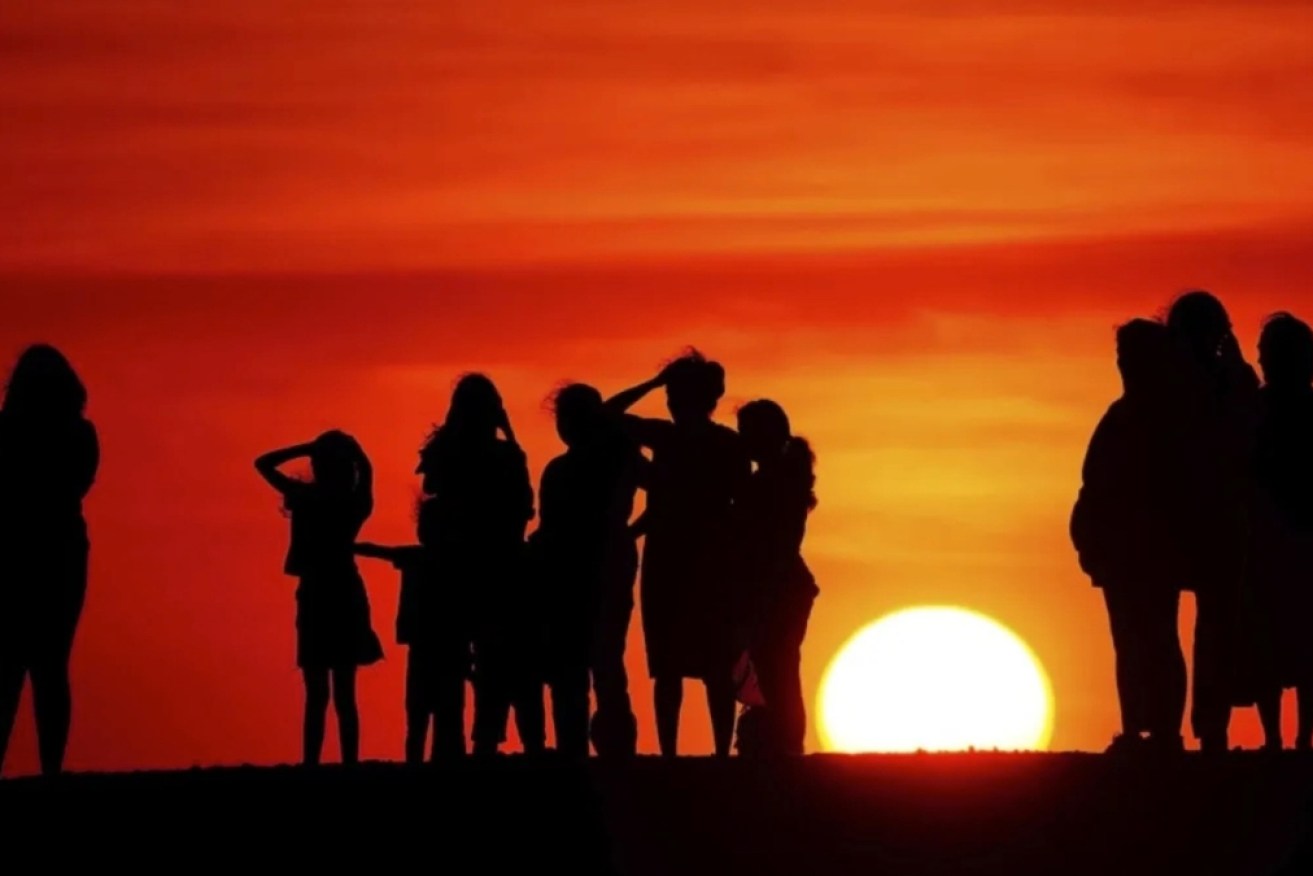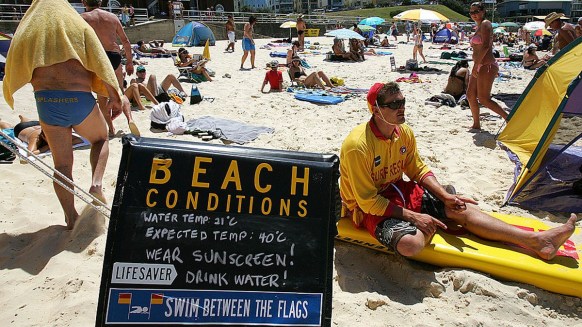Would a name change save lives lost to nature’s biggest killer?


A heatwave warning has been issued for WA, parts of NSW, Queensland and the Northern Territory. Photo: Getty
Last year was the world’s hottest on record, and conditions are only expected to heat up in the future.
This means Australia’s heatwaves – which already cause more deaths than all of the country’s other natural disasters combined – are likely to occur more often, and get even more severe.
To deal with this, Australia is being urged to follow in the footsteps of Spain by preparing for extreme heat events in the same way that we plan ahead for cyclones.
Renew, a non-profit sustainability advocacy organisation, released a report this week examining what certain regions in Spain are doing to combat extreme heat – and what Australia could learn.
Since 2022, the Spanish city of Seville has had a system for naming heatwaves as is typically done with cyclones.
The change was part of a pilot project to raise awareness of the health effects of heatwaves, and to advocate for measures to reduce their impact.
The project also developed a framework to classify potential impacts of heatwaves, similar to Australia’s bushfire risk ratings, from ‘no impact’ to ‘very high risk’.
Rob McLeod, the report’s author and Renew policy and advocacy manager, said Australia should take a leaf out of Spain’s book.
“In Spain, improved public understanding of the dangers of heatwaves, coupled with a national heatwave plan, has helped save lives,” he said.
“We should consider adopting a framework for alerts and communications here that builds on Seville’s heatwave naming approach.
“Heatwaves have killed more people in Australia than any other natural disaster since 1900, and without sustained and ambitious policies to improve our resilience to extreme heat, the challenge will get even harder.”
Pros and cons of naming heatwaves
Climate Council research director Simon Bradshaw said naming heatwaves would be a “very sensible and practical move”.
He said doing so would raise awareness about the dangers of extreme heat and give regions time to prepare to protect themselves and the most vulnerable in their communities.
“If it has a name, a hashtag, and if we’re seeing that name in the media, then of course people are going to pay close attention and take the danger seriously,” Bradshaw said.
“There are some very practical steps we can take; things like cooling our home early in the morning, using shading, doing any outdoor tasks we need to do outside of those hottest parts in the day.
“Staying hydrated, checking on younger members of our household [and] any neighbours we have who are elderly or who may be in a vulnerable situation.”

Not everyone can head to the beach to cool off whenever hot weather hits. Photo: Getty
Lucy Richardson, Monash Climate Change Communication Research Hub lecturer and deputy director, agreed that giving heatwaves names would help spread awareness.
But she said thought needs to be given to the nuances of the psychology of naming extreme weather events.
Issues have already been seen with the naming of cyclones.
“There was a study done looking at hurricanes back about 2014, where they found that hurricanes with female names attributed to them were more deadly,” Richardson said.
“And they thought that was because people felt that they were less scary, so they didn’t prepare as well [as they would for hurricanes with male names].
“There’s the other aspects, too; What’s going to be culturally appropriate? How are [heatwaves] defined? Is it an Australia-wide thing, is it a region-wide thing? And then even the fact that what’s hot in one area may not be the same as what’s hot in another area … a hot day in Melbourne can be completely different to … a hot day in Cairns.”
Wider protections needed
In addition to naming and rating heatwaves, Spain aims to retrofit 510,000 homes to adapt to extreme heat by 2026, as part of a broader European ‘renovation wave’.
The Renew report found grants of up to $35,000 are available to cover up to 80 per cent of the cost of retrofits, and up to 100 per cent for socially and financially vulnerable households
Similar measures are needed in Australia for home owners, as is increased support for renters living in dwellings left almost uninhabitable during extreme heat events.
A 2023 study found renters in Australia struggle with ‘hellish’ heat and humidity due to a combination of substandard homes and rising energy costs.
“Some of the most vulnerable people are the ones that have the least capacity to actually retrofit their housing; they don’t have the money, they don’t own the place,” Richardson said.
“When you think about heatwaves, there’s so many things that need to be done to help protect our communities. It’s not just about what your house is like, it’s about what your street is [or] what your suburb is like.
“There’s a lot of complexity there in what needs to be done to make these cities stay liveable. How do we get more vegetation? How do we make sure that we’re reducing that urban heat island effect? How do we manage the water implications, because heatwaves affect our water availability?”
The government is working on a National Adaptation Plan to help the country stay resilient in the face of climate change; the plan is set to be delivered in late 2024.
Bradshaw said extreme heat should be at the centre of Australia’s climate change adaptation plans.
“Whatever adaptation measures we’re taking, sadly we’re also continuing … to expand fossil fuel production [by] approving new coal and gas developments,” he said.
“Because every new coal and gas project increases the danger for all of us, [this] is going to contribute to even more intense heat waves in the future.
“So if we want the room to cool down, we’ve got to stop stoking the fire.”








